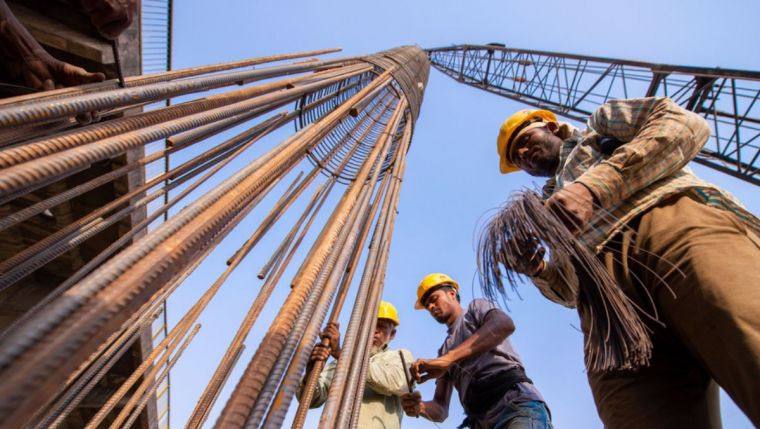India’s steel industry is facing mounting pressure as a surge in low-priced imports and alleged dumping by global producers threaten the competitiveness of domestic manufacturers, according to a recent analysis published in the Reserve Bank of India (RBI) Bulletin for October 2025. ETInfra.com+3Business Standard+3ETCFO.com+3
A troubling trend in imports
The RBI article — titled “Steel Under Siege: Understanding the Impact of Dumping on India” — draws on monthly data of iron and steel imports from April 2013 to March 2025, using the Unit Value Index (UVI) for analysis. ETInfra.com+1 It finds that India’s finished steel imports expanded by 22 per cent in FY2023-24, driven largely by soft global prices. Business Standard+1
In the first half of FY2024-25, imports rose by another 10.7 per cent, before contracting in the second half — a change attributed to the imposition of safeguard duties aimed at curbing dumping. ETInfra.com
Nearly 45 per cent of India’s imported steel originates from five major countries: South Korea (14.6 per cent), China (9.8 per cent), the United States (7.8 per cent), Japan (7.1 per cent) and the UK (6.2 per cent). ETCFO.com+1
Domestic production under strain
While domestic steel consumption has been growing—averaging a monthly growth rate of 12.9 per cent from April 2022 to November 2024—domestic production has failed to keep pace, widening the gap between demand and local output. ETInfra.com+1
The RBI’s analysis points out that this gap has been exacerbated by the influx of cheaper imported steel, which has eroded domestic market share, lowered capacity utilisation and compressed profitability for Indian producers. Business Standard+1
Additionally, global steel prices have trended downward since April 2022, creating further pricing pressure for domestic manufacturers. ETInfra.com
Why this matters
The entry of large volumes of comparatively cheaper steel imports poses several risks:
- Domestic producers struggle to compete on price, pushing down margins and undermining expansion plans.
- Lower utilisation of existing capacities could deter fresh investment in new capacity, particularly relevant as India aims to ramp up steel production for infrastructure and defence sectors.
- If unchecked, the trend may lead India to become more dependent on imports, contrary to its goal of self-reliance in steel.
The RBI points to a shifting global supply scenario — with sluggish growth in major steel-producing regions such as China prompting suppliers to redirect excess capacity toward high-growth markets like India — increasing the dumping risk. ETCFO.com
What’s the policy response?
The RBI article underscores the need for a “balanced approach” to support the domestic steel industry: combining policy interventions, cost-efficiency measures, greater technological adoption and sustainability initiatives. ETInfra.com
Already, safeguard duties have been introduced to provide temporary protection for key segments of steel imports. The RBI acknowledges this step but emphasizes that more sustained policy action may be needed to prevent recurrence of large-scale dumping. Business Standard+1
Industry bodies and domestic producers are also pressing for stronger trade remedial mechanisms, including longer-term safeguard duties, anti-dumping investigations and duty-free import limits. For instance, the Directorate General of Trade Remedies (DGTR) has recommended a three-year safeguard duty for certain flat steel products. The Times of India
Industry voices & concerns
Executives from leading Indian steelmakers say the combination of cheaper imports and global price softness has created a challenging environment. As one industry source noted:
“The dumping of cheap steel from global producers may pose a risk to domestic steel production, which can be mitigated through suitable policy measures.” Business Standard
Meanwhile, smaller steel producers are especially vulnerable given lower margins and limited capacity to absorb price shocks or scale efficiently.
The road ahead
The RBI’s findings suggest that India’s steel sector is at an inflection point: without robust policy safeguards and improved competitiveness, there is a real danger of domestic production losing ground to imports.
Key areas to watch in the coming months include:
- The effectiveness of safeguard duties and anti-dumping measures in curbing injurious imports.
- Whether Indian steel companies accelerate investments in technology, automation and cost-reduction to enhance their global competitiveness.
- The pace at which India can upgrade its production of high-end specialty steels, where import pressure is lower and value-addition is higher.
- How global trade dynamics evolve: shifts in U.S. or EU steel tariffs, trade-route adjustments by exporting nations and changes in global demand may all influence import flows into India.
- The impact on domestic infrastructure and construction sectors, which rely on domestic steel production for stability in supply and pricing.
In short, the RBI’s bulletin serves as a warning and a call-to-action: the domestic steel industry is under siege from cheaper imports and dumping practices, and unless addressed proactively, the country’s ambition to strengthen its steel-making base may face significant headwinds.


































